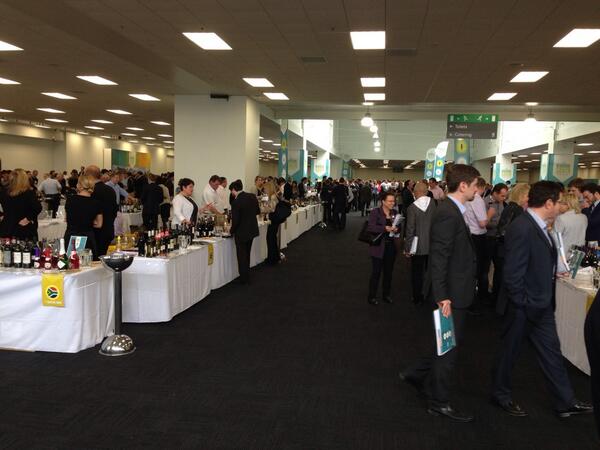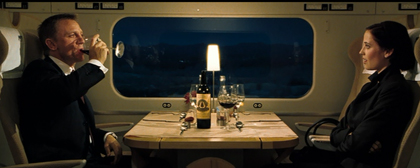WARNING. The following piece of writing contains whimsy. It originally appeared on timatkin.com, where other similarly whimsy-tainted pieces I have written may also be found.
To
understand how, in 2014, one man with a grudge managed to bring down some of
the highest and mightiest in Bordeaux, you have to know a little about the
background. The man in question was a Russian oligarch called Mischa Vious, the
187th wealthiest man in the world, according to a 2013
report in The Sunday Times.
Traditionally
a vodka drinker, Vious had been introduced to wine by his third wife, an
aspiring young flautist called Ella Fantine whose parents owned a pretty little
Pauillac estate close to the village of St Laurent between Châteaux Mouton and
Lafite-Rothschild. Château Oublié had belonged to the Fantines for generations,
but its grapes had, until the1970s, been delivered to the Pauillac cooperative
to be crushed and sold under the co-op’s La Rose Pauillac label.
When Serge Fantine, Ella’s father, inherited the vines, he resigned from the
cooperative and joined the association of Crus Artisans which was made up of
estates that took pride in being humbler than the Crus Bourgeois.
Well-informed
local professionals were well aware of the quality of the 2.5ha of Oublié
terroir, and especially of the fact that its vines sat close to the hamlet of
Milon on a small moutte - or hill - of the kind
from which Mouton Rothschild had taken its name. The Fantines were not great
winemakers and they could not afford high quality equipment, but their land was
special enough and the price sufficiently modest for those in the know to buy
the wine almost every vintage.
When Monsieur and Madame Fantine died after their
insufficiently protected ski-lift was hit by lightning, their only daughter and
her wealthy Russian husband had to decide whether to sell the estate or invest
in it. The first option was made very appealing by the number of approaches
they received from owners of neighbouring châteaux. It was said that their prime
slice of old Cabernet Sauvignon and Merlot in Pauillac could usefully be
swallowed into the Lafite or Mouton estates.
Unlike Burgundy whose grands crus can only come from
vineyards that have been recognised as grands crus, Bordeaux classifications
are based on brands. A second-growth château could legally sell all of its
vineyards and replace them with cru bourgeois vines without losing its
second-growth status. And Cru Artisan vines could legally be transformed into
first growth vines as soon they are bought by a first growth château.
As the offers from top Pauillac châteaux poured in and
grew ever more generous, Mischa Vious became increasingly determined to see
what he could do with the estate. “They buy our land for peanuts and sell
bottles for thousands” he growled in his thick Russian accent. “Maybe is more
intelligent that I sell bottles for thousands myself.”
Top experts were flown in and millions spent on
improving the drainage, replacing ailing and dead vines and creating a
state-of-the-art winery, complete with the latest concrete eggs and barrels. By
the time the 2009, the first vintage, was released, Château Oublié was
acknowledged by the select number of critics who had visited the estate to be
one of the most painstakingly produced wines in the world. The 2009 went almost
unnoticed when it was released, but when it was included in a major blind
tasting in 2013, it came third only to Margaux and Lynch Bages. The 2011 was
one of Robert Parker’s few 100 point wines.
Despite the evident quality of its wine - selling for
50% more than any Cru Bourgeois, and more than many crus classés - Château
Oublié’s application to become a Cru Bourgeois was, however, shunned. The
château apparently failed to fill several criteria, but Vious was reassured
that, in time, promotion would not be out of the question. Be patient, an
official said. In another ten or twenty years… Vious felt slighted - and angry.
“It is just because I am Russian man not French”, he thundered. “It is like
1855. Rothschild was only second growth because owners were Jewish.”
“In any case”, he growled, “I no longer want to be
member of Cru Bourgeois or even Crus Classés. It is not clubs I need to join.
My wine is too good for them…”
Meanwhile,
another battle was quietly simmering in Bordeaux. The decision by François
Pinault to withdraw Château Latour from the en primeur system
had angered a number of prominent Bordelais. After much lobbying, in March
2014, an ultimatum was issued: Latour had to rejoin the system or it would be
expelled from the Union des Grands Crus.
It was at this time that, by coincidence, Pinault and
Vious happened to meet. Both had had tough childhoods; the Frenchman had been
sent to a tough school in the mountains where he had been made to wear clogs
and learn carpentry, while the Russian had grown up in the rigorous conditions
of Siberia. Neither stood fools or unnecessary pretension easily and the
conversation inevitably turned to the challenges they were both facing. After
several bottles of Latour and some of Vious’s best vodka, the two men had come
up with a bold plan.
The
announcement was made in Le Monde. For an
initial ten years (there would be a renewable lease), Château Latour would
cooperate with Château Oublié to produce limited volumes of an entirely new
unclassified wine called Chateau Latour Oublié whose price- despite its lack of
classification - would be 15% above that of Latour. Distribution would be
handled by Château Latour and the wine, like Latour, would be sold when it was
ready to drink.
Château
Latour was apparently totally reconciled to its expulsion from the Union des
Grands Crus. Latour, wrote the Le Monde journalist,
was already above classifications and Unions, in the same way that the Louvre
was above other museums and Versailles above other palaces. (And, as the writer
continued, Pomerol’s unclassified Pétrus was above most of the region’s
classified wines.)
That writer was one of a set of carefully briefed
high-profile journalists in France, the UK, US and China, all of whom penned
articles posing the same question. If the new top wine of the Médoc was no
longer to be a Grand Cru Classé, surely the notion of an application for UNESCO
world heritage status for the 1855 classification was out of the question.
The
British blogger Sam Nutkin MW wrote a widely-read piece on his website
demolishing the “immutable” quality of the 1855 Classification that was so
vaunted by those seeking the UNESCO recognition. Until 1952, he revealed,
Château Lascombes had only 15ha of vines. Today it has over 80. What relation
did the current estate have to the one that was classified in 1855? To agree to
requests for heritage status for the vineyards of Burgundy and the cellars of
Champagne made sense, he argued: after all, the Burgundian boundaries were
established by law and after centuries of experience and the crayères of Reims were dug by the Romans 2000
years ago. In this trio, only the 1855 Classification was a comparatively
recent human conceit – a list of brands - whose internal shape has shifted ever
since its creation.
Perhaps inevitably, the 1855 Classification not only
failed in its application, but became the subject of much negative publicity in
the crucially important Chinese market. UNESCO snubbed the Bordelais even more
firmly by giving the Burgundians and Champenois the recognition they sought.
Mischa Vious is still owner of Château Oublié and joint director of Latour
Oublié. Both wines continue to sell at their super-premium prices to people who
care more about their quality and/or prestige than their status as crus
classsés, bourgeois or artisans. Mr Vious is not a particularly welcome guest
at many black tie Bordeaux events.
****************************
The
facts behind this month’s whimsy: the 1855 classificationis seeking UNESCO World Heritage status - along
with the “climats” of Burgundy and the cellars of Champagne. While there is no
such estate as Château Oublié, there is a Cru
Artisan in Pauillac called Château Béhèré, situated next to Château Mouton-Rothschild
which has under 5ha of vines and produces 33,000 bottles of wine that sells for
under £15 apiece. In May 2013, the estate was sold to property magnate Jacky
Lorenzetti who, according to
Decanter outbid a first growth to get it. Its
grapes were previously sold to the Pauillac cooperative.
There is a respected theory that anti-semitism lay
behind Mouton Rothschild originally being classed as a second growth. The
recent revival of the Cru Bourgeois syndicate hasbeen plagued with
legal efforts questioning the way inclusion in its membership is decided.
François Pinault’s decision to withdraw Château Latour from the en primeur system was greeted with anger by many in Bordeaux and
with predictions that his move to selling his wines when they were ready to
drink would fail. The first release sold out immediately, however - and at high
prices. Pétrus, like several of its unclassified neighbours in Pomerol,
continue to sell for higher prices than many Médoc châteaux that were
classified in 1855.














